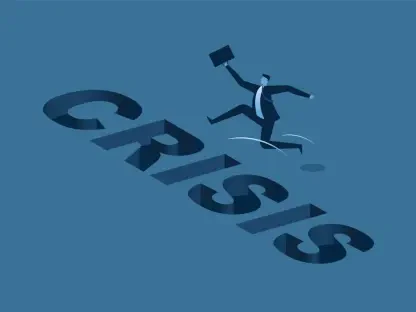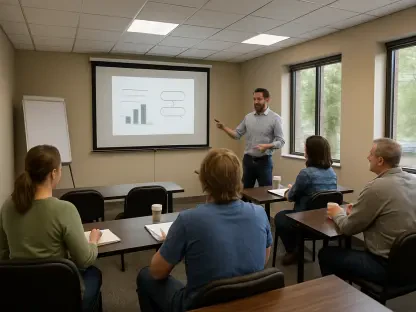In the heart of Wittmann, Maricopa County, Arizona, a financial storm is brewing at Nadaburg Unified School District (NUSD), where a staggering $5 million cash deficit has ignited a fierce public battle among Republican state leaders. The district, desperate to sustain operations through December, requested a $3 million advance in state aid, only to face rejection from Arizona Treasurer Kimberly Yee, who flagged concerns over potential mismanagement. Meanwhile, State Superintendent of Public Instruction Tom Horne has fiercely defended NUSD’s legal right to the funds, framing the denial as a disservice to students. This high-stakes disagreement transcends mere budget numbers, exposing rifts over fiscal responsibility, educational priorities, and even political ambitions as both leaders are rumored to be eyeing the 2026 Republican primary for superintendent of public instruction. The unfolding drama raises urgent questions about how Arizona balances school support with financial oversight.
Financial Distress at Nadaburg Unified School District
Immediate Crisis and Funding Request
The financial plight of Nadaburg Unified School District came into sharp focus when officials alerted state authorities to a $5 million cash deficit, prompting an urgent request for a $3 million state aid advance to keep operations afloat through the end of the year. This advance, permissible under state law with approvals from multiple offices, was intended to bridge the gap until property tax revenues arrive. However, on September 24, Treasurer Kimberly Yee denied the request, citing insufficient evidence of necessary expenditures and a lack of spending reductions by the district. Despite receiving endorsement from the Department of Education, the absence of approval from other required entities, including the Department of Administration, compounded the setback. This rejection has left NUSD in a precarious position, struggling to meet payroll and maintain essential services, while state leaders debate the merits of immediate intervention versus stricter financial scrutiny.
Beyond the immediate denial, the procedural complexities surrounding the funding request have deepened the district’s uncertainty. NUSD’s plea was rooted in a critical need to stabilize operations amid a cash flow crisis, yet Yee’s decision underscored a broader concern about whether such advances risk enabling deeper fiscal issues. Reports indicate that the district’s projected deficit looms large against its expected local revenue, amplifying fears of unsustainable finances. The lack of consensus among state officials on how to address this shortfall has stalled progress, leaving school administrators to grapple with daily operational challenges. As bills mount and resources dwindle, the urgency for a resolution grows, with the district’s ability to serve its students hanging in the balance while bureaucratic and ideological battles play out at the state level.
Enrollment Growth as a Key Driver
At the core of NUSD’s financial strain lies an unprecedented surge in student enrollment, with a reported 12.9% increase in weighted student count over the past year and a remarkable 100% jump over the last four years. Superintendent Aspasia Angelou has emphasized that this rapid growth has overwhelmed the district’s infrastructure, stretching classrooms, transportation services, and staffing to their limits. The influx of students, while a sign of community expansion, has created immediate demands that existing budgets cannot meet. With resources already thin, the district struggles to accommodate new learners without additional funding, highlighting a disconnect between demographic realities and the state’s financial support mechanisms. This growth, though a positive indicator, has become a double-edged sword for NUSD.
Compounding the issue is the structural lag in funding tied to property tax revenues, which are not disbursed until January, well after the district’s most pressing needs emerge. This delay leaves NUSD vulnerable during critical months, unable to align cash flow with the urgent requirements driven by enrollment spikes. Angelou has pointed out that the timing mismatch exacerbates budget shortfalls, forcing tough choices about where to allocate limited funds. The district’s request for reconsideration of the state aid advance was framed as a necessary lifeline to navigate this gap, yet the rejection has intensified the strain. Without a mechanism to address such funding delays, growing districts like NUSD face a recurring cycle of crisis, raising broader concerns about whether Arizona’s education funding model can keep pace with rapid community changes.
Fiscal Oversight vs. Educational Support
Treasurer Yee’s Stance on Accountability
Treasurer Kimberly Yee’s rejection of NUSD’s $3 million advance request is grounded in a firm commitment to fiscal accountability, reflecting deep concerns over what she perceives as potential financial mismanagement within the district. Yee has highlighted that the projected deficit is nearly triple the district’s anticipated local revenue of $1.7 million for FY2026, a disparity she views as unsustainable. Her decision to withhold funds stems from a belief that providing the advance without stringent conditions could exacerbate the district’s woes, setting a dangerous precedent for other struggling schools. Instead, she has advocated for rigorous oversight, insisting that NUSD provide detailed justifications for its expenditures and demonstrate efforts to curb unnecessary costs. This approach underscores a broader push for transparency in how public funds are managed at the local level.
Beyond her initial denial, Yee has taken further steps to ensure long-term stability by calling for an audit through the Arizona Auditor General’s Office and even suggesting the possibility of receivership via the State Board of Education. These measures signal a zero-tolerance stance on fiscal irresponsibility, as she seeks to uncover the root causes of NUSD’s deficit and prevent similar crises in the future. Her actions are not merely reactive but aim to establish a framework of accountability that could reshape how districts in distress are handled statewide. While critics may argue that such stringent measures delay critical aid, Yee’s position prioritizes systemic health over short-term relief, reflecting a cautious approach to public finance. The emphasis on audits and oversight also raises questions about whether other districts might face similar scrutiny as financial pressures mount across Arizona.
Superintendent Horne’s Push for Immediate Aid
In stark contrast to Yee’s cautious approach, State Superintendent of Public Instruction Tom Horne has emerged as a vocal advocate for immediate support to NUSD, arguing that the $3 million advance is not just necessary but a legal entitlement under state funding formulas. Horne contends that withholding these funds risks disrupting essential educational services, particularly for a district grappling with the pressures of rapid enrollment growth. His perspective frames the advance as a critical stopgap to ensure stability, allowing NUSD to meet payroll and maintain operations without sacrificing student welfare. By prioritizing the district’s urgent needs, Horne challenges the notion that fiscal oversight should trump immediate relief, positioning himself as a defender of educational continuity amid financial turmoil.
Adding weight to his argument, Horne has publicly criticized Yee’s denial as “pretty irresponsible,” suggesting that her decision overlooks the unique challenges posed by NUSD’s demographic surge. Alongside Superintendent Angelou, who has defended the district’s management by noting efforts like cutting administrative positions, Horne emphasizes that the crisis is not a result of recklessness but of systemic funding gaps. Angelou’s assertion that delaying the advance endangers students and families further underscores the human cost of this dispute. This stance highlights a fundamental disagreement with Yee’s focus on long-term accountability, instead urging state leaders to address the tangible, day-to-day impacts on the district. The clash between these viewpoints reveals a deeper tension in Arizona over how to support schools without compromising fiscal discipline.
Political Dimensions of the Dispute
Potential 2026 GOP Primary Influence
The public spat between Treasurer Kimberly Yee and Superintendent Tom Horne over NUSD’s funding crisis carries significant political undertones, especially with both leaders rumored to be potential contenders in the 2026 Republican primary for superintendent of public instruction. Their divergent approaches—Yee’s emphasis on fiscal conservatism and Horne’s advocacy for educational support—may reflect strategic positioning to appeal to distinct segments of the GOP voter base. Yee’s hardline stance on accountability could resonate with fiscal hawks who prioritize budgetary restraint, while Horne’s push for immediate aid might attract education advocates and parents concerned about school stability. This dynamic suggests that NUSD’s financial woes are not just a local issue but a potential battleground for broader political narratives within the party.
Moreover, the timing and visibility of this disagreement amplify its political weight, as public statements and decisions become tools for shaping voter perceptions ahead of a competitive primary. While the core issue remains NUSD’s urgent need for funds, the overlay of political ambition risks overshadowing the district’s plight, turning it into a platform for ideological posturing. Observers note that such dynamics could complicate efforts to find a pragmatic solution, as each leader may feel compelled to double down on their stance to maintain credibility with their respective supporters. This layer of complexity raises concerns about whether the best interests of NUSD’s students and families might be sidelined in favor of electoral strategy, highlighting the intricate interplay between governance and politics in Arizona’s education system.
Broader Implications for State Policy
The clash over NUSD’s funding also sheds light on wider policy debates in Arizona regarding the balance between short-term educational needs and long-term financial health. Yee’s push for audits and potential receivership points to a growing emphasis on oversight within the state’s public education framework, particularly for districts showing signs of fiscal distress. This approach, while aimed at preventing mismanagement, could set a precedent for how future funding requests are handled, potentially creating a more rigid process that prioritizes accountability over flexibility. Such a shift might deter districts from seeking emergency aid, even when justified, for fear of intense scrutiny or loss of local control, reshaping the relationship between state authorities and school administrations.
On the other hand, Horne’s and Angelou’s focus on the immediate human impact of funding delays draws attention to the need for adaptive policies that account for rapid community growth. Their arguments underscore a critical gap in Arizona’s funding model, where mechanisms often fail to keep pace with demographic changes, leaving districts like NUSD vulnerable. This dispute has sparked discussions among policymakers about whether reforms are needed to better align funding timelines with enrollment trends, ensuring that schools are not caught in cash flow crises. Looking back, the intensity of this debate reveals a pivotal moment for the state to reassess its approach, prompting calls for collaborative solutions that could prevent similar conflicts and safeguard both fiscal integrity and educational quality in the years ahead.








